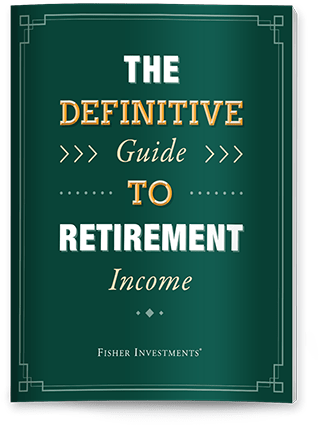Personal Wealth Management / Market Analysis
Another Round of Mailbag Delights
As the sun sets on January, we shine some light on your questions.
Another month has come and nearly gone, which means it is once again time for us to kick back with a steaming cup of coffee, reach into our mailbag and open your questions! (Kidding, of course, it is all digital.) Lots of fun goodies this month, which reminds us, if you want to play, drop us a line here. No question too big, no question too small.
What are your thoughts on AI and particularly its energy needs?
Ah yes, the vast amounts of electricity required to train artificial intelligence (AI) models and whether this presents opportunities in the Utilities sector. This has been a hot topic for the past year or so, occasionally sending Utilities on some big runs and causing many analysts to speculate that the sector’s days as a stodgy, defensive play are over.
We don’t buy this—see our past commentary here and here. In short, it looks to us like people are overestimating electricity demand growth and ignoring that data centers haven’t been a massive earnings driver for the sector to date. Nor does it seem Utilities firms expect them to be, based on projections during earnings calls. That seems right to us, given electricity infrastructure buildouts are expensive and primarily debt-financed. Taking on high up-front costs at high interest rates isn’t exactly a near-term earnings booster. The sector’s history jibes with this, too, given it didn’t outperform during the great suburban air conditioning expansion in the mid-20th century or the Internet’s advent in the 1990s and 2000s.
But also, there are some more recent tells. One, you probably saw the news that a US power provider has plans to reopen the mothballed Three-Mile Island nuclear plant, famous for its meltdown decades ago, and cited AI as a factor in its decision. That got a lot of attention. What got less attention was its major push for government loan guarantees and/or subsidies to do this—not the sort of thing you tend to see when a project is massively profitable on its own merit in a timeframe relevant to investors.
And two, AI models are getting exponentially more energy-efficient. They are getting more powerful while simultaneously using less energy, cutting further against the thesis of AI as a massive tailwind for Utilities returns.
We suspect life will stay the same for Utilities stocks, the odd countertrend notwithstanding. They will probably remain interest rate sensitive and do best when markets are pricing in recession.
What do you think about private equity investments?
Not all they are frequently cracked up to be. We aren’t inherently against them, mind you, and we disagree with the caricature of private equity firms as asset-strippers out to make a quick buck. There is a long history of private equity overseeing turnarounds, too, and bringing firms back to public markets in healthier state. It is a neat feature of the financial ecosystem even if it doesn’t always work.
But in the purely investment sense, we don’t think they are superior to a plain old portfolio of publicly traded stocks, and we think there are some caveats that don’t get enough attention. People often view them as higher returning and less volatile than stocks. But what they really are is less liquid. They don’t have minute-by-minute pricing data. Just periodic valuations, which means fewer pricing points—fewer dots on the chart, which hides shorter-term swings. Like any fund, they have to mark down the value of their holdings if the market value falls, which would register in another fund selling its stake at a discount or the company getting funding from other investors at a lower valuation. This has happened a lot the past couple of years.
Another consideration: Private equity funds often rely on cash infusions from existing investors. You could find yourself in a situation where you have to sell more liquid investments in order to meet capital calls, and you might find you don’t otherwise want to sell at that time or price. There are also some hints of stress in the industry’s push to broaden the pool of eligible investors. It has a whiff of an industry hunting more liquidity. To us, that is a reason to tread lightly.
How does the US economy compare to China size-wise?
Depends on whom you ask and how you do the math! Some scholars say China is bigger, based on a measure of GDP called purchasing power parity. That is, once you adjust for how far a dollar goes in a country and equalize that across nations, China’s economy becomes bigger than the US.
That is … a way to do it. We certainly understand why think tanks and academics use it. They are often concerned with sociological matters like quality of life and poverty, and it is hard to compare these across countries if you don’t adjust for purchasing power, population size and the like.
But for stocks, it really is more about the national aggregate, so we think plain old raw GDP, unadjusted beyond conversion to US dollars, is the way to do it. In this case, we think it is best to use nominal GDP, not adjusted for inflation, because countries have differing inflation rates and you can’t really find a base year or adjustment that would make sense for everyone.
So on that basis, at 2023’s end—the latest data available—China’s GDP was just under $17.8 trillion, according to the World Bank. US GDP was a shade over $27.7 trillion, also per the World Bank. We use these figures rather than national statistics agencies’ official tallies to ensure the standard of measurement is the same—the IMF and UN also provide solid data, if they are more your cup of tea.
What does this tell us? That despite China’s rapid growth and far bigger population, US output is still greater. Which makes sense, when you consider that the US got a head start on development and wasn’t hindered by communism and central planning. The fact that China has grown so big in the nearly 50 years years since Deng Xiaoping’s reforms began is a pretty awesome testament to its people. US GDP is a pretty awesome testament to folks here, too. And now we will move on, lest we start singing “We Are the World” or “It’s a Small World (After All).” (Our apologies if the mere suggestion gave you an ear worm.)
If your audience were all 40-year-olds, what would you tell them?
The same thing we tell our friends, families, parents, cousins, children, what have you: Compound growth is your greatest tool, your best friend. Invest as much as you can, as often as you can, be patient, and you will be amazed at what it can grow into in the long run. Yes, there will be ups and downs, bull markets and bear markets. But as long as the global economy’s longer-term trajectory is up, then stocks should keep growing. When you think of all markets have overcome since modern data begin about 100 years ago, that is a pretty darned powerful testimony to their resilience.
But back to compound growth, whether you are 17 and trying to get started on a little nest egg with your summer job earnings, or you are 23 and opening your first 401(k), or are 40 and thinking it is time to start making up for lost time, or are 60 and thinking about how to fund retirement without a steady paycheck, compound growth is still your friend. It is never too late!
Still, let us imagine a hypothetical 40-year-old, which isn’t a stretch given some of our ages (shhhh please don’t tell). This imaginary friend, whom we will call Jim, and his wife, whom we will call Pam, spent their 30s focused on raising their kids and just getting through the day to day. Retirement saving was in the back of their minds, not at the forefront. But Jim has just changed jobs, which means his 401(k) from his old employer is free to move and invest as he sees fit. He is feeling a bit peevish because, while he contributed regularly, he ticked the box for the conservative default allocation and never changed it. As a result, he missed out on a lot of growth and is kicking himself that it is worth only $100,000.
So we would tell Jim, don’t lose heart! If you invest that $100,000 in stocks and keep making your monthly $500 contributions, if we assume a conservative 6% annual return, you will have a little over $1 million in 30 years! If we assume 8%, still below the S&P 500’s long-term annualized average, the end value rises to nearly $1.7 million! And if stocks match their long-term average of around 10%, then it is over $2.7 million! We did all of this with the SEC’s Compound Interest Calculator, a fun feature on Investor.gov. Play with it. Try different starting values, contribution amounts, returns and time horizons. Yes, keep in mind that it is just illustrative and markets don’t deliver straight-line returns. But let the demonstrations of compound growth encourage and inspire you.
And for those of you closer to retirement, this is for you, too! Your time horizon doesn’t end at retirement. It lasts as long as you need your money to work for you—potentially 20, 30 years or more, depending on your goals, needs and other considerations. Compound growth can work for you, too.
If you would like to contact the editors responsible for this article, please message MarketMinder directly.
*The content contained in this article represents only the opinions and viewpoints of the Fisher Investments editorial staff.
Get a weekly roundup of our market insights
Sign up for our weekly e-mail newsletter.

See Our Investment Guides
The world of investing can seem like a giant maze. Fisher Investments has developed several informational and educational guides tackling a variety of investing topics.





